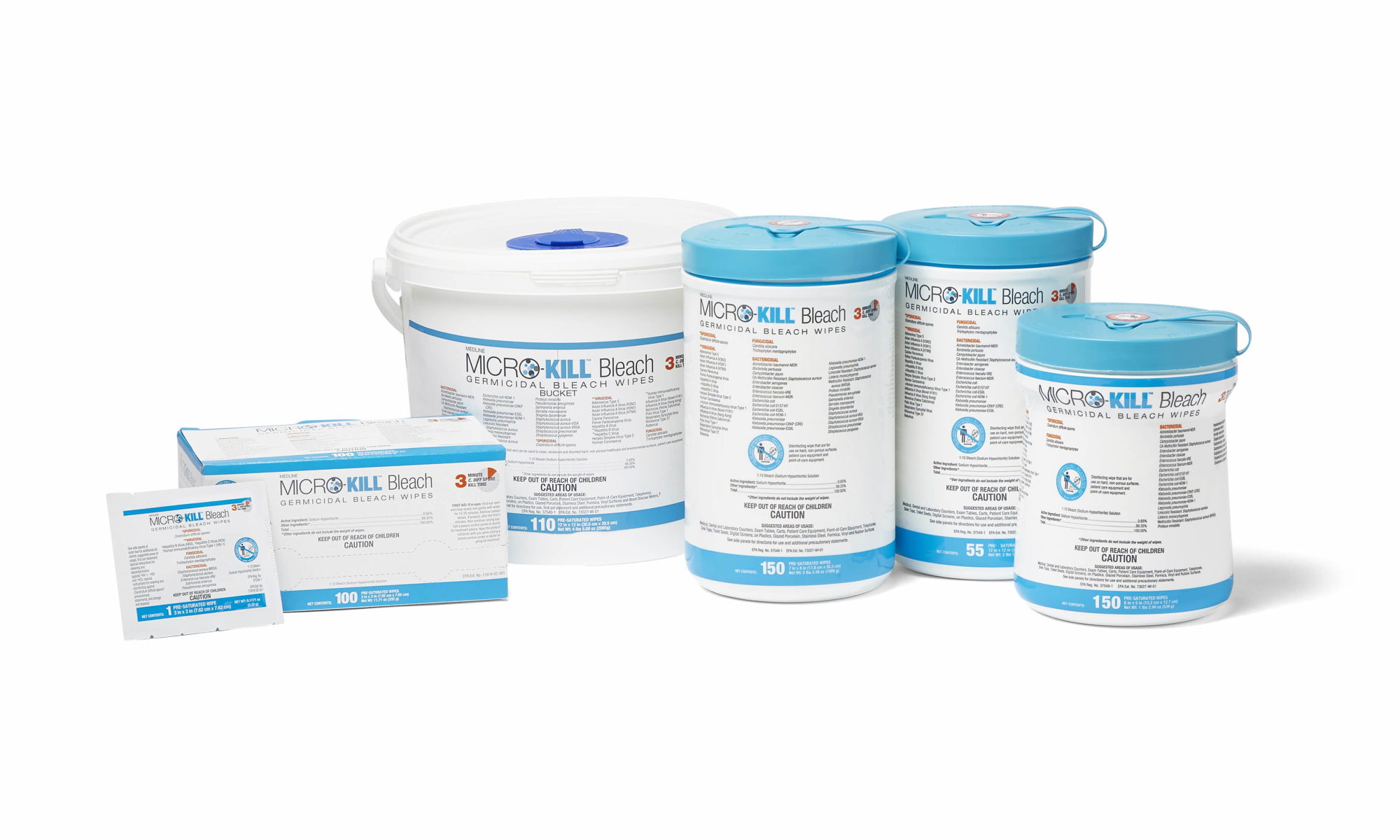Understanding the Role of Bleach Products in Infection Prevention

By Medline Newsroom Staff | August 7, 2019
This June, Medline announced it received EPA clearance to add Candida auris (C.auris) to the list of pathogens the Micro-Kill Bleach Germicidal Bleach Wipes kill. The announcement shows how innovative products are helping health systems and hospitals stay one step ahead of potentially deadly outbreaks. To better understand the significance of this breakthrough and the latest CDC recommendations around pathogens, the Newsroom spoke with Megan Henken, director of product management for environmental services at Medline.
Newsroom: Why is the Micro-Kill announcement relevant to what’s happening in healthcare today?
Henken: Before Medline received the EPA-approved kill claim against Candida auris, the direction provided for how to protect surfaces was based on the educated speculation that a disinfectant with a Clostridium difficile (C.diff) spore claim would be effective. The announcement that Micro-Kill Bleach Germicidal Bleach Wipes are EPA-approved to kill that specific fungus eliminated any uncertainty.
Newsroom: What are some of the challenges you and your teams are hearing from EVS staff, administrators and clinicians about combatting C. auris?
Henken: Candida auris is a hardy pathogen. Yeast of any variety can be difficult to kill, and on top of that, Candida auris can often be multi-drug resistant, making it even more difficult to kill. On top of that, C.auris can survive for weeks on a surface and is known to form biofilm. Any one of these factors by itself could cause concern, but when you combine them all together you create the perfect storm.
Newsroom: What are the advantages and disadvantages of using bleach products like Micro-Kill Bleach Germicidal Bleach Wipes?
Henken: The primary reason to use bleach is for the strong efficacy. APIC identified spores as the most difficult class of pathogens to kill, and Micro-Kill Bleach Germicidal Bleach Wipes are effective against Clostridium difficile spores in 3 minutes. Such strong efficacy comes with drawbacks like residue and mild corrosion on some surfaces. The drawbacks pale in comparison to the benefits that come with having a product that’s been proven remarkable effective at killing this particularly dangerous pathogen.
Newsroom: Does the CDC have any recommendations when it comes to fighting pathogens like C. auris?
Henken: Before any disinfectants had the EPA-approved claim against C.auris, the CDC had to default to recommending the use of an EPA-registered hospital-grade disinfectant effective against Clostridioides difficile spores (List K). Medline’s Micro-Kill Bleach Germicidal Bleach Wipes were already on this list, but the newly received EPA approved claim verifies its efficacy.
Learn more about how Medline helps health systems fight infections.
References: APIC Guideline for Selection and Use of Disinfectants. American Journal of Infection Control. Vol. 24, No. 4., pp. 313-342, August 1996.
Medline Newsroom Staff
Medline Newsroom Staff
Medline's newsroom staff researches and reports on the latest news and trends in healthcare.

